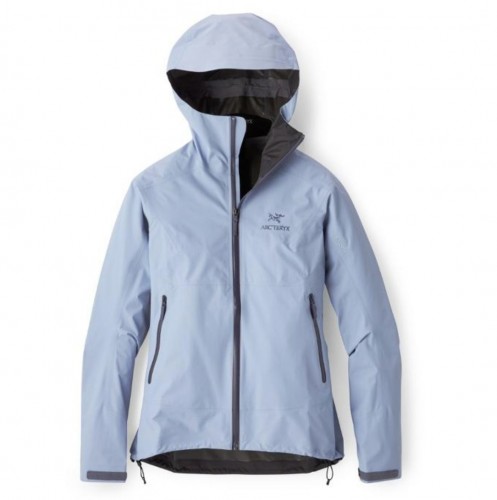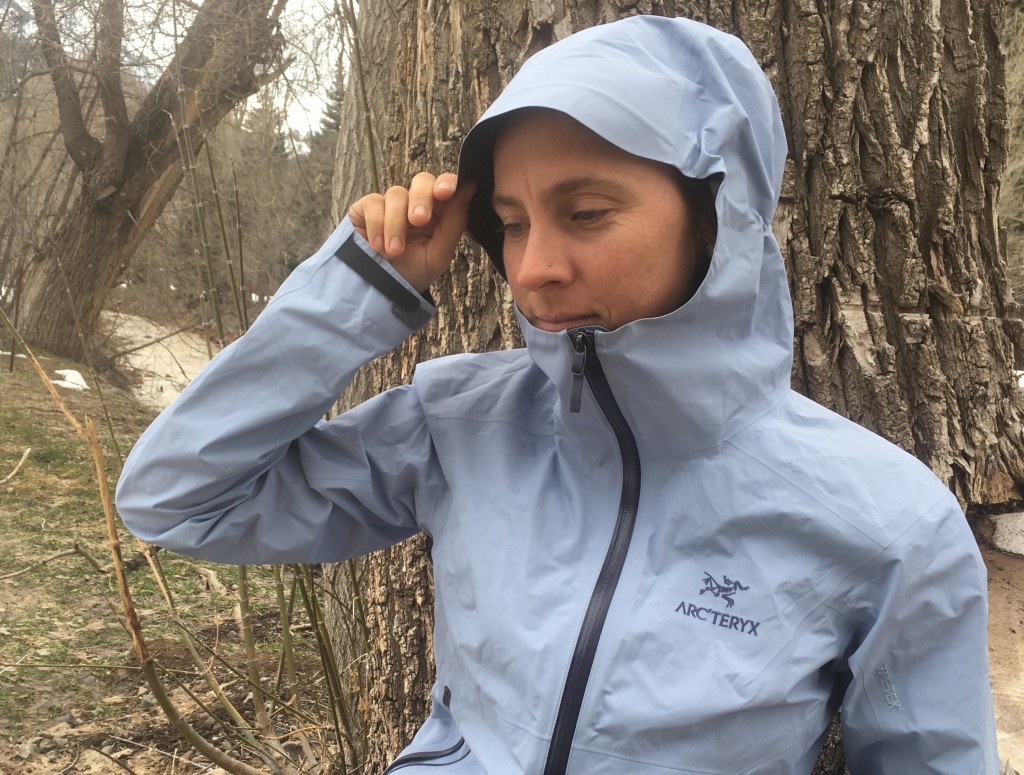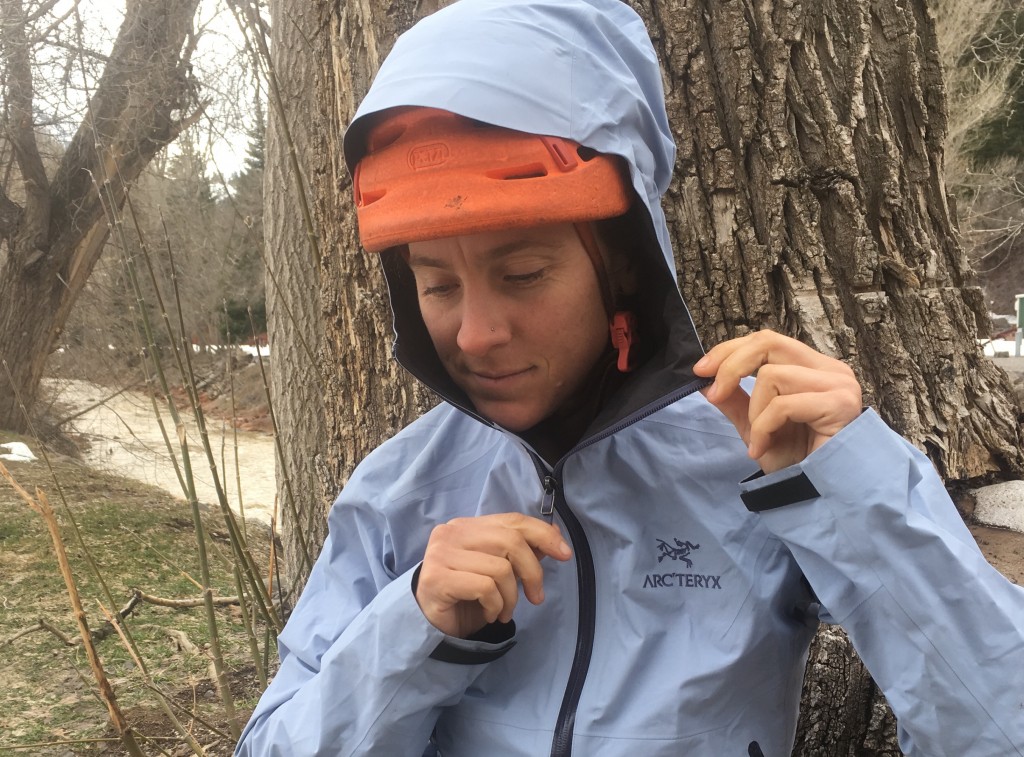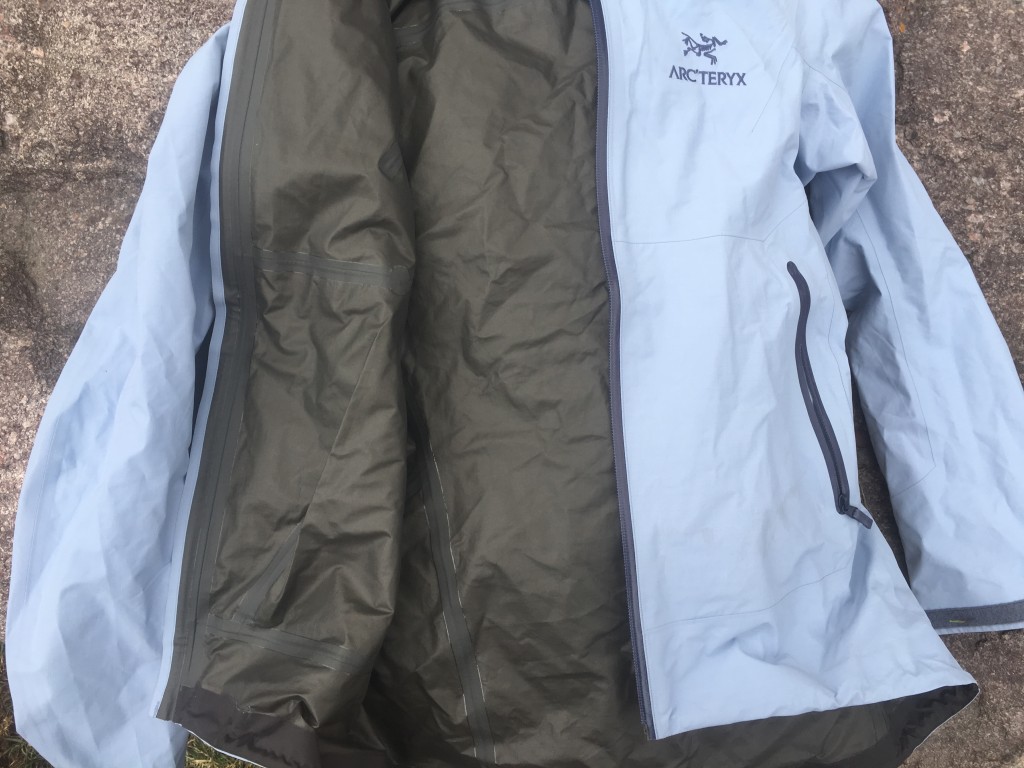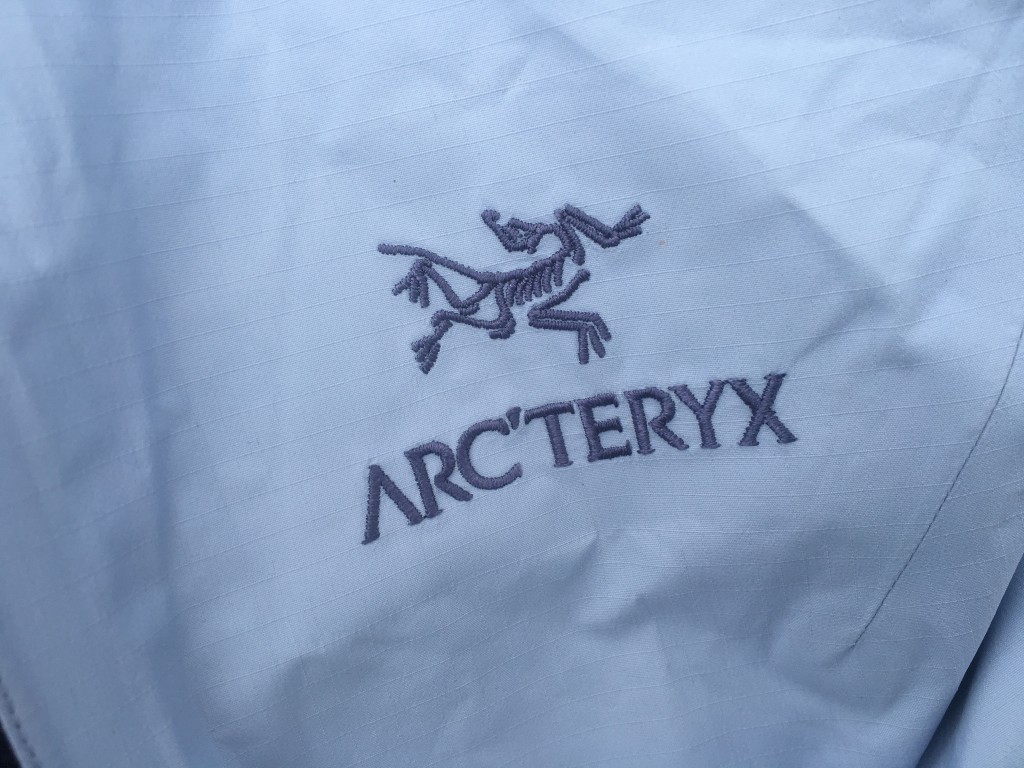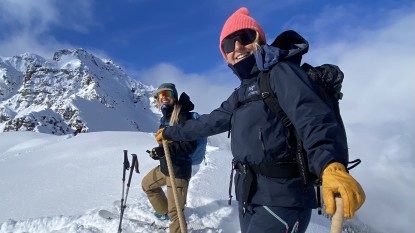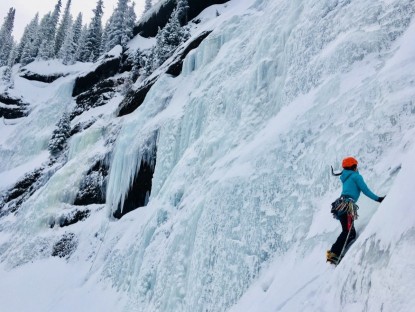Arc'teryx Zeta SL - Women's Review
Our Verdict
Our Analysis and Test Results
The Zeta SL from Arc'teryx is an impressively durable, comfortable, and lightweight hardshell jacket at an excellent price point from this reputable company.
Performance Comparison
Weather Protection
The Zeta SL uses Gore-Tex Paclite technology which is a two-layer fabric that performs nearly as well as most three layer hardshells. This fabric is generally lighter weight than most hardshells and feels noticeably thinner, but it holds up well in harsh environments and is still a reasonable choice for most mountain adventures.
The Zeta SL was one of our favorites for backcountry ski tours in the mild winters of the Pacific Northwest, as the layer is burly enough for stormy, lower elevation mountain ranges. As the temperatures cool off and risk of exposure to dangerously severe conditions elevates, however, you may want to consider a burlier shell.
The hood has a simple, single drawcord at the back; this is not the best for severe weather, but it is a light and completely functional solution. It's adequate for a jacket designed for hiking and trekking where you don't necessarily need to look around and into the storm to see where you're going next, as you do when mountaineering, climbing, or skiing.
Just one step up, the Arc'teryx Beta SL Hybrid might be enough to give you a little more confidence in bigger or higher mountains, but we would likely go with a true all-rounder like the Norrona Trollveggen or the Arc'teryx Beta AR for harsh winters, big objectives, and remote ranges.
Mobility
The Zeta SL does not have the raglan sleeves we often appreciate most for mobility in hardshell jackets; the sleeves are more traditional, sewn on at the end of your shoulder. The articulation and fit do not suffer tremendously, but for climbing movement, we do prefer raglan sleeves. Since this jacket is designed for hiking and trekking, however, we did not dock the jacket any points for being less ideal for climbing movement. It wears very well under a backpack with this more “standard” shoulder design.
The arms allow adequate space for layering, and the longer back length ensures good coverage even when moving around and lifting your arms. In fact, due to the excellent panel design of the Zeta SL, the back panel does not rise at all when we raise our arms… Arc'teryx nails it again!
The feel of the fabric is also key to mobility. The stiffer nature of most Arc'teryx jackets helps the jacket not stick to wet skin, and the Paclite fabric has a softer feel next to skin—all of this adds up to a jacket that lets you move freely instead of sticking to your skin or clothing below.
If you love this jacket, but you want something a little more mountain-ready, check out the Arc'teryx Beta SL Hybrid. Otherwise, the Norrona Trollveggen is a fully featured hardshell that is mountain-ready, and still impressively easy to move around in.
Breathability
The Zeta SL relies entirely on the breathability of the Gore-Tex Paclite fabric for the overall breathability and venting of the jacket. There are no pit zips, and the hand pockets do not have mesh to act as vents in a pinch—which is a way some jackets combine features without adding complication or the extra weight of another set of zippers.
The two-layer Paclite fabric, however, is highly breathable. It achieves this through the porous technology of Gore-Tex, and also seems to benefit from the simple fact that this is, overall, a thinner hardshell jacket—this makes it easier for your accumulated body heat inside the jacket to pump moisture through the pores in the jacket. In practice, we found this to be an excellent shell for mild winter use, but if you hang out in tropical locales, you may search for something even lighter weight.
If you wish this jacket had pit zips, the Arc'teryx Beta SL Hybrid will provide, and is one of our favorites! Or for something more fully featured and mountain-ready, we also liked the Norrona Trollveggen and the Arc'teryx Beta AR.
Weight
At 9.5 ounces for a size small, this jacket is on the much lighter end of hardshells in this review, and across the industry. This is an impressively durable and versatile hardshell jacket, useful in many environments—except perhaps the most extreme hot or cold.
Features
The Zeta SL is a simple, streamlined shell jacket for trekking and hiking use. It does not have many features as a result. Instead, Arc'teryx focused their efforts on balancing weight and comfort to make something that is light in your pack and nice on your back.
This was an excellent choice for the intended application. Looking at this jacket through a hiking and trekking lens, we don't lament the lack of a chest pocket or helmet-compatible hood or a pocket you can stuff the jacket into. The Zeta SL is just a really nice hardshell that won't weigh you down.
For a fully-featured hardshell equipped for the truly extreme, we'd recommend the Mammut Nordwand. Or for something nice and light like the Zeta SL, perhaps just a few more features, notably pit zips and some more durable fabrics, check out the subtly more featured Arc'teryx Beta SL Hybrid.
Durability
The Zeta SL is an impressively durable jacket, especially for the weight. This jacket is lighter than some jackets, despite using burlier fabric. Arc'teryx achieves this weight savings through careful application of features; this jacket is best suited to hiking and trekking, so you won't find a lot of extra pockets to keep you navigation tools or snacks readily accessible while on the move.
For the long term, and arguably also for improved versatility, we really like the use of more durable 40 denier fabric in the Zeta SL. If you want this durability plus a little more, check out the Arc'teryx Beta SL Hybrid. But if you're looking for the burliest hardshells this review has to offer, steer toward the Arc'teryx Alpha SV or the Mammut Nordwand, both expedition-ready, confidence-inspiring, extremely durable hardshell jackets for the high alpine or polar environment.
Versatility
The Zeta SL is designed specifically for hiking and trekking, with a focus on comfort and efficiency. In this application, we find it to be very versatile. This jacket is an excellent choice for a variety of environments due to its light weight, breathability, and soft feel of the inner fabric.
The Zeta SL is not optimized for climbing purposes, and the arm articulation underlines this (see mobility above), but it does very well for backcountry skiing in milder climates where the motion is a lot like hiking anyway.
The Zeta SL is best for hiking and trekking use, as advertised by Arc'teryx. However, we found it to be very well suited to backcountry ski tours in milder climates as well as some alpine climbing, though the arm motion is not as good as other jackets with raglan sleeves. This is light and simple and streamlined to be a great choice for trekking in a variety of climates, save the most extreme cold or hot.
Value
The Zeta SL is an impressively good deal. This comes with all the brilliant design and manufacturing standards we expect from Arc'teryx, without the stereotypical $700 price tag. This is a much lighter jacket, so it may not be the best for more extreme conditions or activities, but it will get you far and last a long time for a great price. We consider this jacket a "gateway jacket"; Arc'teryx is likely to hook you on their brand if you buy in with this more affordable model.
Conclusion
We balk at the price point of most Arc'teryx jackets, but this Zeta SL offers all that we love about their jackets at an impressively low price. Through all the testing, we have, for better or worse, often found that Arc'teryx jackets are well worth the price, even when alarmingly high. With the Zeta, Arc'teryx offers consumers all the same attention to detail and quality manufacturing at a much lower price. We're a huge fan of the Zeta SL, and we imagine it will solve most, if not all, of your hardshell needs.


